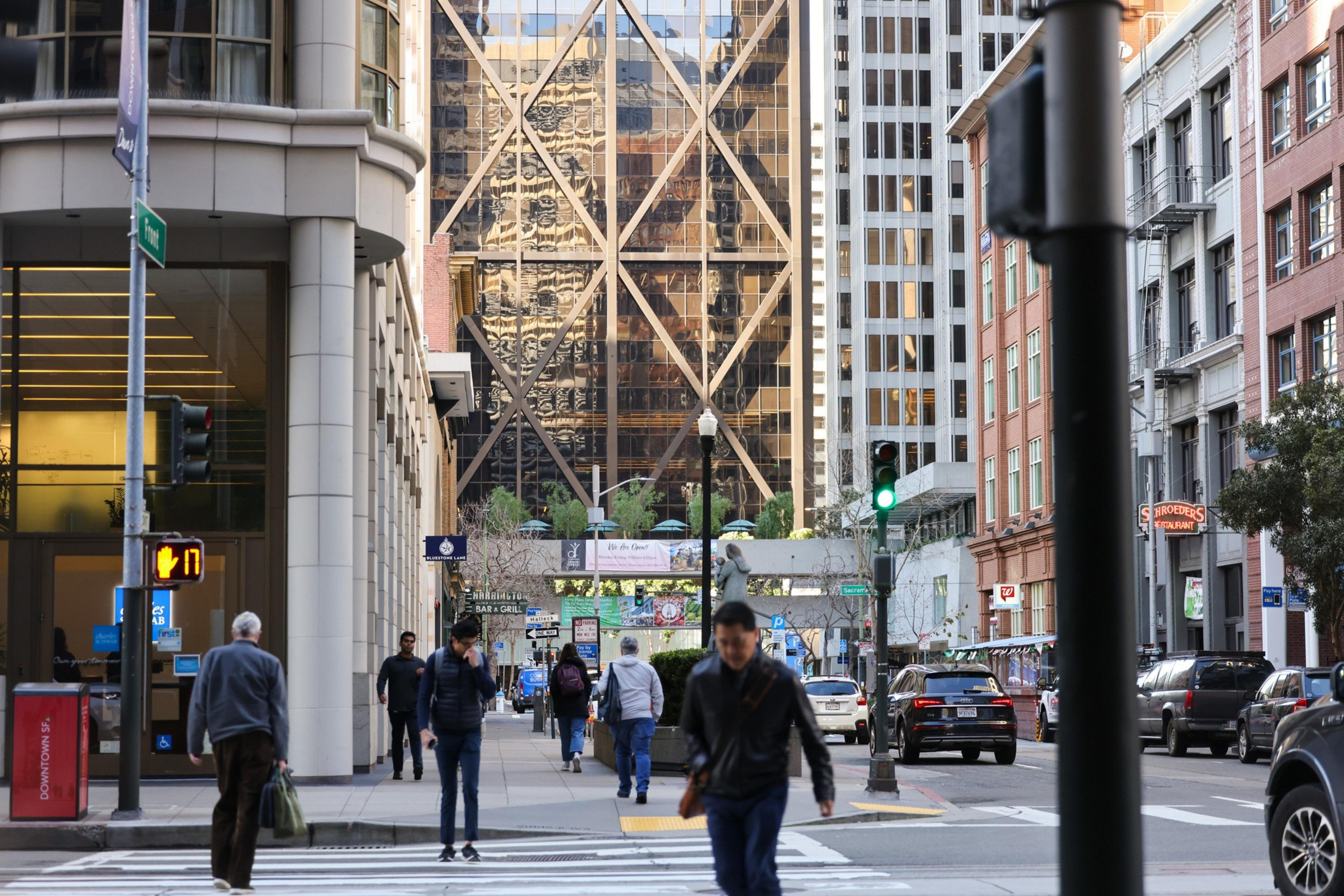Between the widespread layoffs and the floundering real estate market, the business leaders that turned up to a chat about the San Francisco economy at The Commonwealth Club on Monday probably didn’t want to hear that everything was going OK—but nevertheless, that was what they got.
“We are in a better place today than where we were [two years ago],” San Francisco Federal Reserve President Mary C. Daly said in an hour-long appearance. However, because inflation is still higher than it should be—currently hovering at roughly 3% as opposed to the Fed’s targeted 2%—now isn’t the time to lower interest rates yet, she said.
“In order to get inflation down to our target, it is very likely it will take more of a demand restraint to do the job,” Daly said. “And when you slow demand, the labor market slows.”
In layman’s terms, the Fed is still trying to rein in spending across the board so that prices don’t increase too fast relative to workers’ wages. The only mechanism it has to do so is to make borrowing money more expensive for homebuyers, employers and owners of struggling commercial real estate properties alike.
But in doing so, the Fed also has to be careful not to tip the scales too far in the other direction, Daly said. For if interest rates were to stay where they are for too long, employers might start cutting jobs rather than just slowing down hiring.
“We have two goals, one tool and a lot of uncertainty,” Daly said.

According to the latest data (opens in new tab) from California’s Employment Development Department, San Mateo and San Francisco counties have lost a total of 7,500 jobs since this time last year. Had it not been for the jobs added in the healthcare and hospitality industries, the losses would have been even more stark.
The last two years stand in contrast to the run the economy went on during the 2010s and well into 2022, during which the region steadily added more jobs every year. It wasn’t until two years ago that inflation in the U.S. reached 8%, prompting the Fed to take action, and the rapidly growing tech industry began contracting and laying off workers.
Justifying the Fed’s current policy to hold the line, Daly spoke about her experience growing up in Ballwin, Missouri during a period of high inflation in the 1970s.
“Inflation made it hard for families in my community to do anything else other than to manage the day-to-day,” Daly said. “Worse of all, there was no end in sight.”
“Now [the Fed’s] disinflation policy remedied that,” she continued. “But the medicine was harsh. My family like many others went from being constrained by high inflation to being hampered by job loss. Looking back, that medicine seemed necessary.”

When asked if she saw the risk of the Bay Area economy sliding into a stagflation—where inflation and unemployment are both high—Daly said the Fed doesn’t see evidence that such risks are in the economy’s future.
“Our GDP growth is solid; our labor market is still very solid; and importantly, inflation is coming down,” Daly said. “I understand the worries, but let’s look at the information.”
The San Francisco metro area’s unemployment rate, at 3% as of last month according to EDD data, is lower than the statewide number of 5.2%.
Regarding the biggest challenges still facing the region’s economy, Daly, who also hosts a podcast called Zip Code Economies (opens in new tab), said the supply of affordable housing remains the top priority among employers and employees that she’s spoken to, as it had been before the pandemic.
For San Francisco business leaders who are still concerned about the slow pace of the city’s recovery relative to other cities, Daly had this to say:
“If you’re the founder of something, and you’re a part of this, well then let’s change it,” she said. “Talk about what you need to fix and encourage your people to come back to work.”
